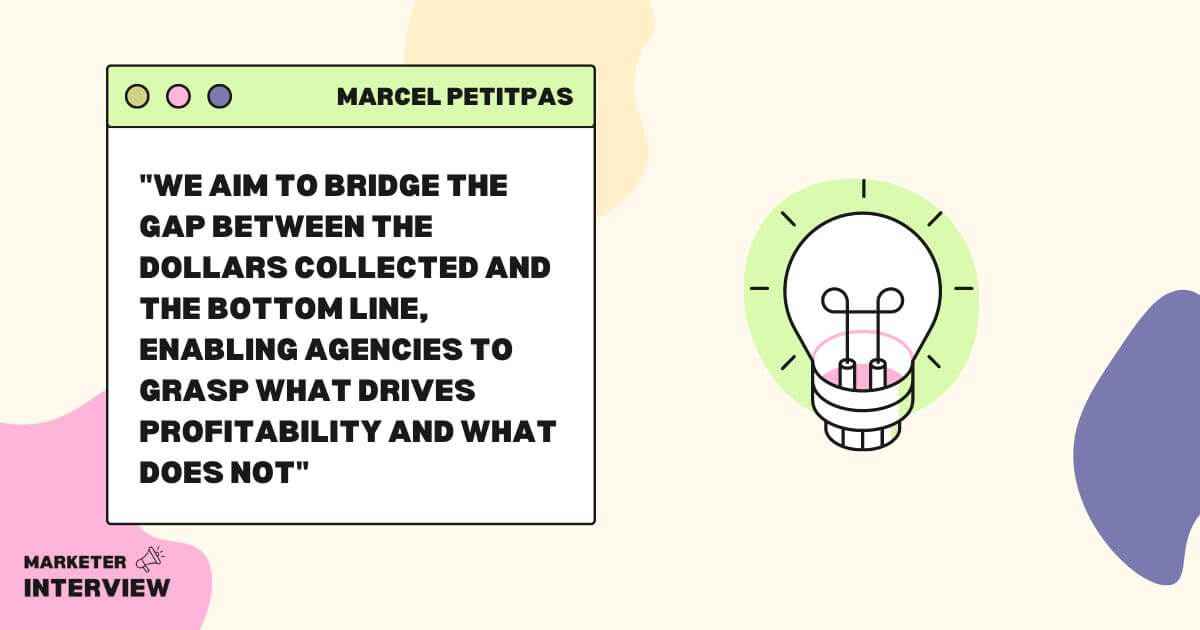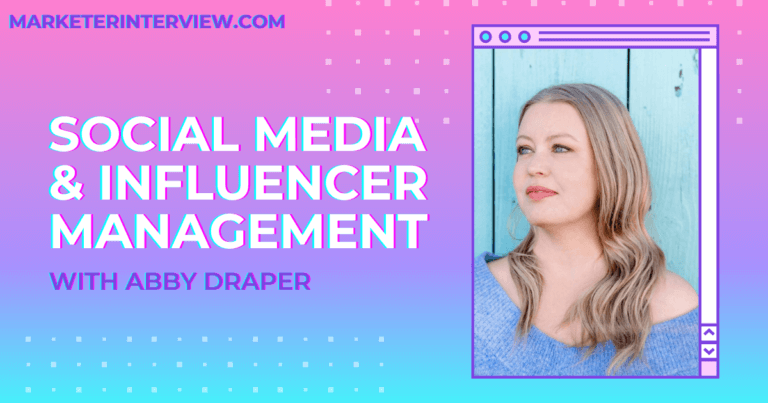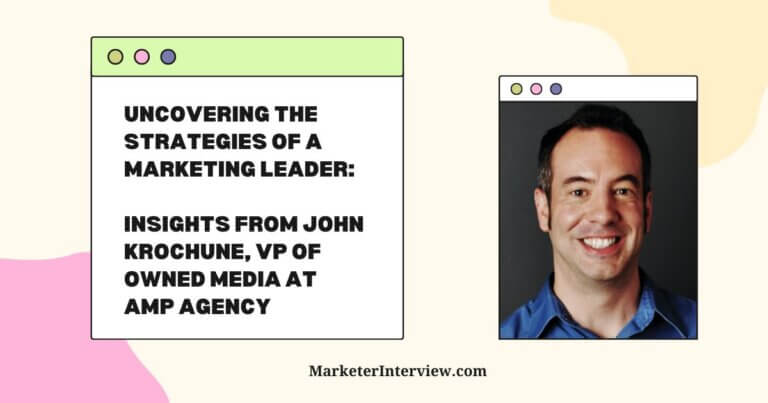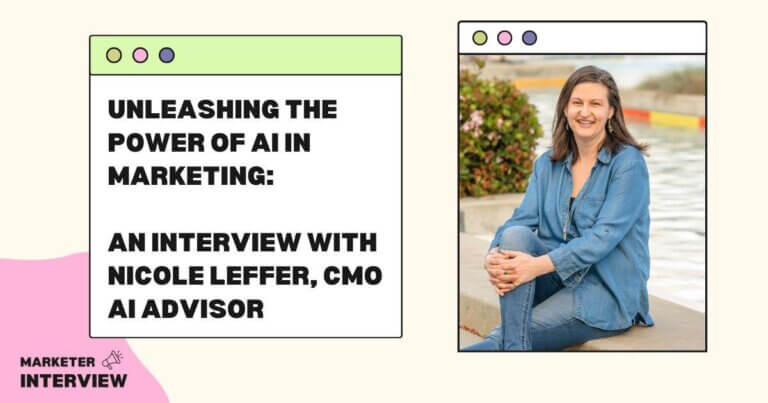Maximizing Agency Profitability: Insights from CEO & Co-Founder Marcel Petitpas
Welcome to Marketer Interview, the leading marketing blog where we dive deep into the minds of remarkable marketers.
In today’s interview, we have the pleasure of speaking with Marcel Petitpas, the CEO & Co-Founder of Parakeeto.
With a passion for agency profitability and marketing strategy, Marcel has dedicated his career to helping digital and creative agencies measure and improve their profitability.
If you’ve ever wondered how to make your agency more profitable while maintaining a healthy work-life balance, you’re in for a treat. Marcel has invaluable insights to share with us today.
Let’s jump into the interview and discover the secrets behind agency success.
Contents
- 1 Could you share your journey into the marketing world and how you became passionate about agency profitability and marketing strategy?
- 2 What inspired you to establish Parakeeto and focus on helping digital and creative agencies improve profitability?
- 3 Agency profitability is a significant challenge for many firms. What are the most common pitfalls that agencies encounter when it comes to maximizing their
- 4 Please elaborate on the four steps you mentioned in your introduction that lead to improved agency profitability. How do they work?
- 5 In your experience, what are some effective marketing strategies that agencies can employ to attract and retain high-value clients?
- 6 How important is it for agencies to accurately measure utilization rates, client profitability, and project profitability? And what tools or methods do you recommend for achieving these measurements?
- 7 What are some common misconceptions about achieving high profitability in the agency world, and how can agencies overcome them?
- 8 Can you share a success story where you helped an agency significantly increase its profitability? What were the key factors that contributed to their success?
- 9 With the constantly evolving marketing landscape, what emerging trends or strategies do you believe will significantly impact agency profitability in the near future?
- 10 As the CEO & Co-Founder of Parakeeto, what tools or software do you find most valuable in your day-to-day work, and how do they contribute to your effectiveness and efficiency?
I got involved in this field when a friend approached me about starting a business focused on virtual real estate, specifically creating virtual reality tours for real estate properties.
This was back when the technology wasn’t readily available on smartphones. We would physically visit houses, capture numerous photos, and convert them into 3D models, allowing people to explore the properties using virtual reality headsets or virtual tours.
That experience marked the beginning of my journey in the industry. While I was interested in entrepreneurship before, this was my first real foray into it, and I have never looked back since then.
What inspired you to establish Parakeeto and focus on helping digital and creative agencies improve profitability?
After exploring various businesses and venturing into technology and software, I received a call from my friend Jarod. He had an idea for a product he and every other agency owner he had spoken needed.
At the time, Jarod was running a successful agency. Still, his team spent significant time each week dealing with spreadsheets to measure profitability, Utilization rates, client health, and other related metrics. Recognizing the difficulty and inefficiency of the process, Jarod proposed the idea of starting a company to address this problem.
As someone who had previously run an agency, I immediately resonated with the issue he described. Intrigued by the potential solution, we began discussing the idea in more detail, and eventually, we decided to start the company together.
Given my own experience in running an agency, I quickly recognized the significance of the problem and joined Jarod in co-founding the company to tackle this challenge.
Agency profitability is a significant challenge for many firms. What are the most common pitfalls that agencies encounter when it comes to maximizing their
One of the pitfalls that many agencies face is difficulty measuring their profitability.
Typically, agencies have a basic understanding of their finances: they know how much money is coming into their business and can see the final profit figure. However, what happens in between remains a mystery, and they are often unaware of why the profit falls short of their expectations.
At Parakeeto, we aim to shed light on this black box and help agencies comprehend the factors that impact profitability.
We aim to bridge the gap between the dollars collected and the bottom line, enabling agencies to grasp what drives profitability and what does not. By doing so, we assist them in identifying strategies to maximize their profitability.

Please elaborate on the four steps you mentioned in your introduction that lead to improved agency profitability. How do they work?
The first step is to ensure that your financial statements reflect accurate data to manage an agency’s profitability. It’s the initial opportunity for every agency owner, as neglecting it leads to wasteful expenditure. Therefore, owners should devote time and money to their finances.
Most agencies we audit (about nine out of ten) aren’t measuring their gross margin correctly, which we refer to as Delivery Margin. It should be the same as gross or contribution margin, but we use different terms to avoid semantic arguments with accountants.
In essence, agencies need to understand what their Delivery Margin represents. It means determining how much of each dollar they collect from clients is the agency’s responsibility to earn, and how much of each dollar is left over to run the business after the deliverables are completed.
In order to measure their Delivery Margin correctly, they must first properly isolate and subtract pass-through expenses like advertising spend, external contractors, white label partners, and materials from their revenue to measure their AGI.
Then, they need to isolate their delivery costs, which represent the cost of completing the deliverables for the client. This usually includes payroll allocations related to the delivery team and shared delivery expenses such as software licenses and equipment which enable delivery to do their job. Most agency P&L’s don’t differentiate between Delivery Payroll or Delivery Software – which means an agency can’t easily understand what it’s costing them to do client work without digging into the transaction level.
Reducing overhead costs is often the focus, but the lack of fundamental profitability in selling and delivering services is the primary reason for agencies’ unprofitability. Gaining insight into Delivery Margin is crucial as it often will expose this as the challenge.
Once a Delivery Margin issue identified, agencies can focus on three metrics to improve it:
- Average Billable Rate (ABR)
- Utilization
- Average Cost Per Hour (ACPH).
Average Billable Rate indicates how much revenue the business generates per hour spent on client work, irrespective of billing models. It’s a very inexpensive metric that can help compare clients, projects, and services and identify opportunities to improve performance.
The Average Billable Rate can be increased by charging more for the same scope of work, or reducing the time spent on a given type of work without reducing the price. Efficiency gains are often overlooked but can have a significant impact on ABR.
The second metric, Utilization, measures the percentage of team time dedicated to revenue generation. Maximizing Utilization and Average Billable Rate increases revenue without changing the cost structure of an agency.
For example, if a team with 10,000 hours of capacity has a 50% Utilization and a $100 ABR they can generate $500,000 in Agency Gross Income
That same team can generate $750,000 at a 60% Utilization and a $125 ABR.
Lastly, the Average Cost Per Hour focuses on decreasing the cost of team hours by utilizing less expensive resources for certain tasks through improved processes, documentation, and technology. By reducing the reliance on senior employees, agencies can scale with lower payroll costs.
In summary, the four steps involve measuring Delivery Margin and the three related metrics: Average Billable Rate, Utilization, and Average Cost Per Hour. Our agency profitability toolkit provides in-depth videos and resources to help understand and measure these metrics.
If you’d like to learn more about how to measure these metrics and model the impact they could have on your profitability, we encourage you to check out our free agency profitability toolkit.
In your experience, what are some effective marketing strategies that agencies can employ to attract and retain high-value clients?
Earned media and borrowed attention are underrated marketing strategies. Leveraging existing platforms and networks to reach your target audience quickly.
The reality is, there are probably already dozens of people who have your perfect customer’s captive attention on their blog, podcast, youtube channel, in their mastermind or coaching group, etc.
You can often borrow that attention by adding value to that audience with value-added content. Focus on a specific problem, develop a unique point of view, and clearly articulate it to the market.
Creating a structured point of view around a problem is essential to cutting through the noise and offering something compelling to those platforms. Pick a specific problem to solve, develop a compelling point of view, and communicate it effectively, ideally through a framework or formula.

How important is it for agencies to accurately measure utilization rates, client profitability, and project profitability? And what tools or methods do you recommend for achieving these measurements?
Having insight into where performance challenges and opportunities are coming from can be a massive advantage for agencies. While many will try to gain this insight using their financial data, they often run into cost, complexity and timeliness issues with that approach.
That’s why we encourage them to take the much more modern approach and measure the important factors mentioned earlier: Delivery Margin, Utilization, Average Billable Rate, and Average Cost Per Hour.
These metrics allow for a much more timely and cost-effective framework to identify where profitability issues are presenting themselves, and enables operations team to have much more speed and visibility into those things.
To measure these metrics, you need project data, including AGI (Adjusted Gross Income), expected hours, Average Billable Rate, and the Average Cost Per Hour.
You also need people’s data, such as cost, capacity, and Utilization targets. Additionally, time-tracking data is necessary, which can be obtained from timesheet software or resource planning tools.
Unfortunately, there aren’t really any tools that are well suited for both collecting this data and measuring these metrics. It’s important to find tools that facilitate a smooth workflow for collecting information to ensure high-levels of compliance and a consistent structure to your data.
Then, we encourage firms to use an ETL (Extract, Transform, Load) framework for managing their agency data and visualizing it for insights.
This involves storing the data in a database for cleanliness, transformation, and normalization and quality assurance. The information should be visualized through a business intelligence dashboard or spreadsheet thereafter. This framework allows for changes in the tools, data structures and conventions without invalidating historical data or requiring changes and compliance management at the source. It’s far better suited for the constantly changing context of a growing agency and is a much more sustainable framework for managing agency data.
To ensure data integrity, it’s crucial to have a consistent flow of information. Utilize tools that make it easy for your team to comply with data creation. Project management, HR, and time tracking or resource planning tools are recommended.
The key is finding the tools your team actively uses and minimizing the effort required for ongoing data creation.
What are some common misconceptions about achieving high profitability in the agency world, and how can agencies overcome them?
The biggest misconception is that profitability has to come at the team’s expense.
There’s a belief that high Utilization (the team working more hours) is the only path to significant profitability. However, understanding the three levers for profitability (Average Cost Per Hour, Utilization, and Delivery Margin) reveals that infinite combinations of these metrics can lead to high profitability. It’s possible to achieve profitability even with a low Utilization rate, although it may be more challenging and require you to command higher than average rates and/or utilize lower cost talent.
People need to realize that there isn’t necessarily a trade-off between their team’s happiness and lifestyle and the profitability of their business. The key lies in establishing clear cultural constraints and determining what conditions must be met to achieve profitability and rallying the team around data so everyone is pulling in the right direction.
By defining these parameters, businesses can have both a great lifestyle and culture for their team while also hitting industry leading profitability benchmarks. We’ve seen it done many times over.
Here’s a fun story about a client we worked with.
Something I say often is: “Most agencies often suffer from indigestion, not starvation – they just happen to feel the same”.
This particular agency was earning several million dollars in revenue, with a significant portion coming from long-term retainer clients. Despite doubling their business size and revenue, the founders were taking home less profit than before, which confused them.
We discovered that many of their recurring clients had become less profitable over the years. Some even cost the agency more money to service than the revenue they were bringing in.
We advised them to start simple and measure ABR by client, and focus on replacing their least profitable clients with new, more profitable ones. Instead of adding new clients and hiring more people to accommodate new work, we suggested renegotiating contracts with unprofitable clients when a new client came in.
The worst-case scenario was potentially losing a client that refused to renegotiate, but it would be replaced with higher-quality revenue. This approach aimed to eliminate indigestion over time and increas the revenue the team was earning without increasing the amount of time or staff required to do so.
The best-case scenario was successfully renegotiating contracts for higher rates and both expanding revenue and adding new, more profitable customers. By implementing this strategy, they could grow revenue by over 30% without hiring additional staff or increasing costs.
While we have many stories of clients improving profitability, this one stands out due to its unconventional nature. It challenges the conventional thinking of always seeking to add more revenue and emphasizes the importance of focusing on quality of revenue over quantity.
By replacing unprofitable clients, they achieved significant revenue growth and improved their bottom line without expanding their workforce or overhead spending.
With the constantly evolving marketing landscape, what emerging trends or strategies do you believe will significantly impact agency profitability in the near future?
I think agencies have been facing a lot of margin pressure for a long time, and the emergence of generative AI and the acceleration of remote work will continue to compound this.
Historically, margin pressure has come from two primary areas. The first is the rising cost of talent and the decrease in the amount of time generally available from talent, which is generally a positive development. In most agencies, people aren’t expected to work evenings and weekends in the same way they used to be.
Additionally, competition has become globalized, shifting from a local to a global scale as agencies can now work remotely. This has opened up agencies in more expensive geographies to competition that has a significant advantage as it relates to their ability to offer lower prices for similar deliverables.
Agencies have primarily relied on specialization and niching down to combat the increased margin pressure. This approach has helped maintain perceived value, command better rates, increase internal efficiency, and optimize processes.
However, specialization has now become the norm across agencies. I believe the next frontier for agencies is functional specialization. The most profitable agencies we’ve audited certainly specialize in their target market and services and their internal business functions, but they also specialize beyond that.
They focus on what they excel at as operators, not just as a service provider. This involves identifying the expertise within the agency and determining which business functions should be handled internally and which can be outsourced externally.
For instance, consider a client that specializes in selling SEO to a specific market but does not handle most of the SEO delivery internally. They recognized that their strengths lie in sales, account management, and high-level strategy, while they were not as well versed in managing the delivery related to keyword research, creating content, procuring backlinks, project management, delivery operations, etc.
To address this, they partnered with external white-label SEO vendors to handle the tasks they were not world-class at, offering them a percentage of the revenue generated from each client (typically between 30% and 50%). The client retained the remaining revenue and focused on strategy, account management, and sales in-house.
As a result, this company achieved over 40% EBITDA and generated eight-figure revenue. By recognizing their internal specialization and optimizing their business processes accordingly, they were able to grow faster and significantly improve profitability with substantially less operational drag.
Instead of trying to handle the entire scope of work and retain all the revenue, the focus is on recognizing internal specialization and leveraging external vendors who are experts in specific areas. Their focus was on quality of revenue over absolute quantity.
This approach is all about recognizing the strength of the internal team and carving out a specific part of the supply chain or value chain that is best suited to those strengths. By doing so, agencies can achieve greater growth and profitability.
As the CEO & Co-Founder of Parakeeto, what tools or software do you find most valuable in your day-to-day work, and how do they contribute to your effectiveness and efficiency?
At Parakeeto, our most frequently used tools are project management software, specifically Asana.
I don’t claim that Asana is the best project management solution because many good options are available. However, Asana works well for us, despite the trade-offs we make. Almost every discussion within our company occurs in Asana, including all client work and internal projects. Since we are a remote team and aim to minimize meetings, using a project management tool provides the structure and documentation needed for asynchronous communication while still accomplishing tasks.
The second tool we find valuable is Miro, an online whiteboarding software. We rely on it extensively for both synchronous and asynchronous discussions. It helps facilitate collaborative conversations and allows us to visualize ideas effectively.
The third tool we use heavily is Loom. We heavily utilize synchronous video communication for complex discussions requiring a higher context level. Loom bridges the gap between scheduling a call and maintaining asynchronous work. It enables us to convey nuance and detail in problem-solving.
Lastly, we frequently use our own reporting platform to measure our key profitability metrics as a service firm.






